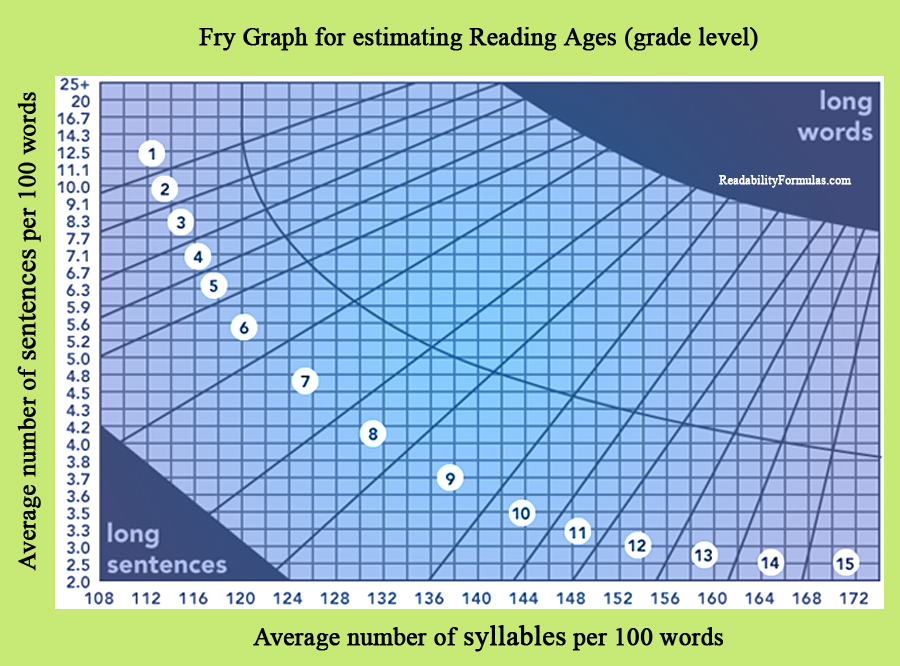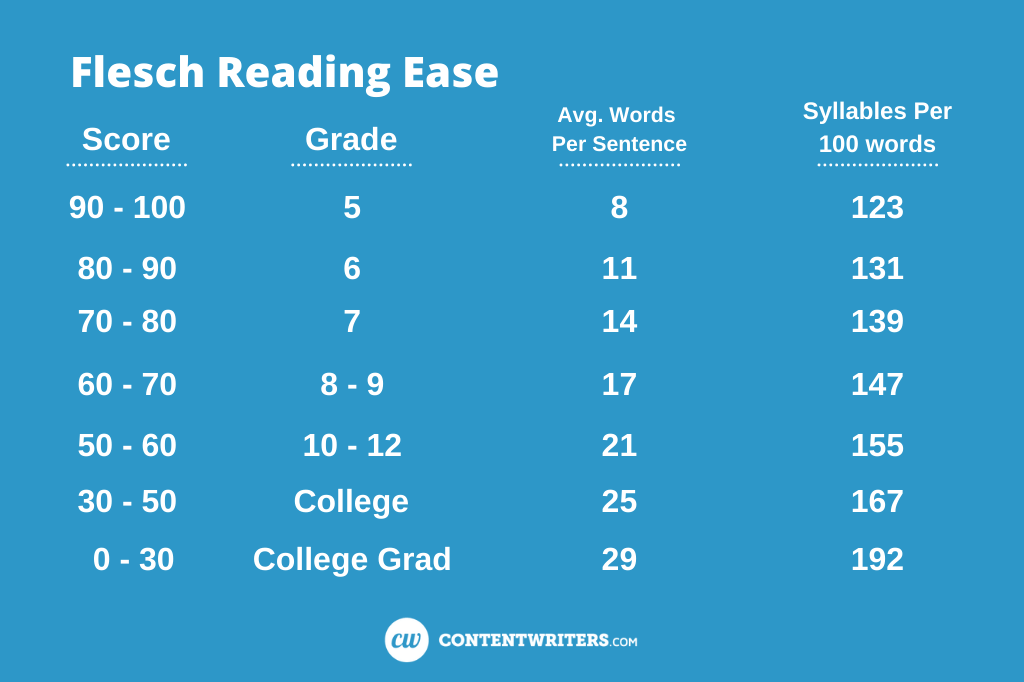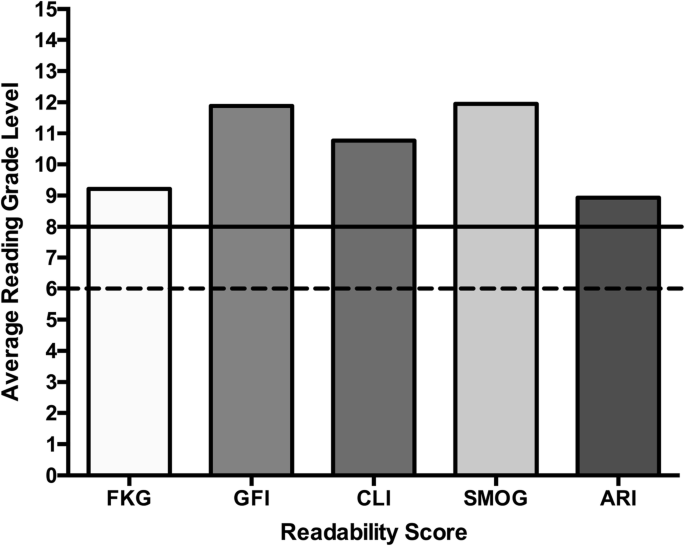

Use the data to make inferences about your writing habits.

Or if you have this problem with your Coleman-Liau Index, you might be being too wordy (Coleman-Liau looks at characters). For instance, remember how the Flesch–Kincaid score is based on syllables? If you notice that score is consistently low on your writing, that might indicate you're using too many complex words. Third, identify potential weaknesses in your writing. But if you're writing adult contemporary literary fiction, your audience likely demands a more challenging reading experience. If you're writing children's picture books, even a Flesch–Kincaid score of 70 might be too high. Your objective here is to write a great paper, which will assuredly require you to use some esoteric language. Conversely, if you're writing a research paper that's only going to be read by a select audience anyway, you can safely disregard your scores. Aim for high readability scores with all five of the above tests. Therefore, do your best to ensure they can be read by anyone who's interested in them. Rather, these writing mediums are meant to be consumed by a wide audience.

This is not to say that you're dumbing down your writing. If you're writing a novel, blog post, or how-to guide, you probably want to aim for higher readability scores. But you're probably wondering how these scores can improve your writing.įirst, know your objectives. Once again, the final score corresponds to American grade levels. Here's the formula:Ġ.1579 - (difficult words/words x 100) + 0.0496 (words/sentences) (Source) Any words not appearing on that list are considered difficult for the purposes of this test. Researchers polled a focus group of students and came up with a list of approximately 3,000 words most of them understood. Rather than determining reading difficulty with syllables or characters, the Dale–Chall method evaluates difficulty based on tests using American fourth graders. This test has a key difference from the others. Since this test is based on character count, it will likely align more closely with your score on the Coleman-Liau Index. The formula:Ĥ.71 x (characters/words) + 0.5 x (words/sentences) - 21.43 (Source) Like the Coleman-Liau Index, the ARI works with characters. Automated Readability Index (ARI)Īgain, this test yields a numerical value corresponding to a grade level. In a case like this, the grade level likely falls somewhere in between. Remember, these tests are computing different values (syllables versus characters). For example, the same text might earn a 2 with Flesch-Kincaid and a 5 with Coleman-Liau. In your reports, you might notice that your Flesch-Kincaid and Coleman-Liau tests differ in their grade levels. For example, a score of 5.2 indicates writing that's written at a 5th grade level. Like the Flesch-Kincaid Grade Level Test, the Coleman-Liau Index indicates the American grade level of reading comprehension required to read a text. (ProWritingAid can work with both.) Here's the formula:ĥ.89 x (characters/words) - 0.3 x (sentences/words) - 15.8 (Source) This is a bit easier on some machines since syllables are more difficult to define than characters. The chief difference between this test and the ones we've seen so far is that it's based on characters rather than syllables. This test is especially helpful to users writing middle-grade, young adult, or children's fiction. Here's the formula:Ġ.39 x (words/sentences) + 11.8 x (syllables/words) - 15.59 (Source)įor example, a piece that scores a 2.8 on this test would be considered readable to anyone at a 2nd or 3rd grade reading level. This test uses the same principles of the Flesch-Kincaid Reading Ease test and equates it to the American schooling system grade levels. That said, if you're writing exclusively for an educated audience (for example, a university paper), you might aim for a lower score. If you find yourself scoring poorly on this test, try shortening your words and sentences. Our app recommends that you aim for a 60 or above since most writing for mass audiences scores around this mark. No need to memorize that-ProWritingAid computes it for you. Here's the formula for the test:Ģ06.835 - 1.015 x (words/sentences) - 84.6 x (syllables/words) (Source) Based on a 0-100 scale, the Flesch-Kincaid Readability Test yields a higher score for text that's easier to read and a lower score for text that's difficult to read. One of the most trusted readability scores ever created.


 0 kommentar(er)
0 kommentar(er)
